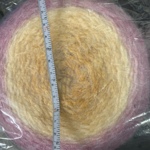NEW VOTE IRON ON PATCH POLITICAL DEMOCRACY CLOTHING ACCESSORY EMBROIDERED BADGE
-
Want this? Get started withGet Started50 PTSFREE!
FREE SHIPPING INCLUDED
New, Never used,
2.8 x 2.8 INCHES
Different voting systems use different types of votes. Plurality voting does not require the winner to achieve a vote majority, or more than fifty percent of the total votes cast. In a voting system that uses a single vote per race, when more than two candidates run, the winner may commonly have less than fifty percent of the vote. A side effect of a single vote per race is vote splitting, which tends to elect candidates that do not support centrism, and tends to produce a two-party system. An alternative to a single-vote system is approval voting. To understand why a single vote per race tends to favor less centric candidates, consider a simple lab experiment where students in a class vote for their favorite marble. If five marbles are assigned names and are placed "up for election," and if three of them are green, one is red, and one is blue, then a green marble will rarely win the election. The reason is that the three green marbles will split the votes of those who prefer green. In fact, in this analogy, the only way that a green marble is likely to win is if more than sixty percent of the voters prefer green. If the same percentage of people prefer green as those who prefer red and blue, that is to say if 33 percent of the voters prefer green, 33 percent prefer blue, and 33 percent prefer red, then each green marble will only get eleven percent of the vote, while the red and blue marbles will each get 33 percent, putting the green marbles at a serious disadvantage. If the experiment is repeated with other colors, the color that is in the majority will still rarely win. In other words, from a purely mathematical perspective, a single-vote system tends to favor a winner that is different from the majority. If the experiment is repeated using approval voting, where voters are encouraged to vote for as many candidates as they approve of, then the winner is much more likely to be any one of the five marbles.
New, Never used,
2.8 x 2.8 INCHES
Different voting systems use different types of votes. Plurality voting does not require the winner to achieve a vote majority, or more than fifty percent of the total votes cast. In a voting system that uses a single vote per race, when more than two candidates run, the winner may commonly have less than fifty percent of the vote. A side effect of a single vote per race is vote splitting, which tends to elect candidates that do not support centrism, and tends to produce a two-party system. An alternative to a single-vote system is approval voting. To understand why a single vote per race tends to favor less centric candidates, consider a simple lab experiment where students in a class vote for their favorite marble. If five marbles are assigned names and are placed "up for election," and if three of them are green, one is red, and one is blue, then a green marble will rarely win the election. The reason is that the three green marbles will split the votes of those who prefer green. In fact, in this analogy, the only way that a green marble is likely to win is if more than sixty percent of the voters prefer green. If the same percentage of people prefer green as those who prefer red and blue, that is to say if 33 percent of the voters prefer green, 33 percent prefer blue, and 33 percent prefer red, then each green marble will only get eleven percent of the vote, while the red and blue marbles will each get 33 percent, putting the green marbles at a serious disadvantage. If the experiment is repeated with other colors, the color that is in the majority will still rarely win. In other words, from a purely mathematical perspective, a single-vote system tends to favor a winner that is different from the majority. If the experiment is repeated using approval voting, where voters are encouraged to vote for as many candidates as they approve of, then the winner is much more likely to be any one of the five marbles.



















Questions & Comments
Sort By: